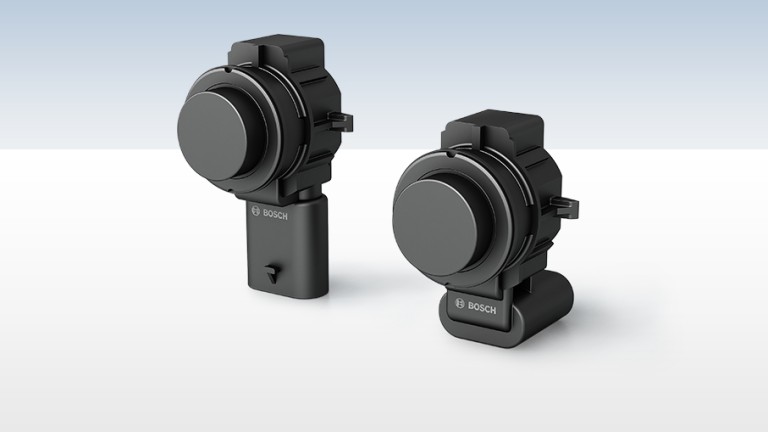When industry wants to detect levels and sense proximity with high precision, they use ultrasonic monitoring. If you’re wondering how it works, this guide aims to introduce you to ultrasonic sensors and the principles behind the technology. You will also learn how to apply it in your company.
Advantages of solutions for ultrasonic sensors
As with all technologies, there are advantages and limitations. We added this information so that you can decide whether you want to use this or not. First, let’s understand what an ultrasonic sensor is.
What is an ultrasonic sensor?
They are electronic devices that measure the distance of a target by emitting ultrasonic waves and converting sound into electrical signals. Ultrasonic waves travel faster than sound. The device consists of two main components:
1. The transmitter that emits sound uses a piezoelectric crystal.
2. The receiver that collects the votes that have reached their destination and returns to the device.
Ultrasonic sensor operating principle
The principle of the ultrasonic sensor is very simple. Electronic devices emit sound waves at frequencies higher than normal human hearing. A transducer inside the sensor receives and transmits sound like a microphone.
Sensors measure when a tone is sent and received to determine the distance to the target. You can read this article for a detailed explanation of how sensors work.
Ultrasonic sensor application
Advantages of solutions for ultrasonic sensors
Ultrasonic sensor solutions are very useful in detecting obvious objects. Machines using infrared sensors may find it difficult to measure the level of the liquid because the target is translucent. However, ultrasonic sensors can detect presence regardless of material, surface or color.
There are five standard uses of ultrasonic monitoring. They:
1. Object detection
Many tech companies and automakers are developing fully autonomous and self-driving cars. Both human and self-driving vehicles incorporate technology to assist driving through the use of sensors to comprehensively monitor roads and the environment. This sensor detects vehicles in nearby positions and warns the driver when the vehicle is in a blind spot.
2. Distance detection
Sensors help drivers to avoid collisions with other vehicles or objects behind or in front of their own vehicle. They are especially useful when parking, as they monitor the proximity of the vehicle to a wall or other object and then warn the driver to stop. They also work well on the road because they are still working on the road.
3. Detect diameter
It is mainly used in factories. Sensors ensure that the automatic production line runs smoothly. An example is a printer that produces magazines and newspapers. Paper is usually available in rolls and the diameter of the roll decreases with use.
Sensors can help the printer recognize when a roller is low. This ensures they are ready for a new roll before the print line breaks. These sensors also work with sound-absorbing materials such as cotton or rubber.
4. Slack detection
Sensors ensure that cables, conveyor belts or cables are positioned correctly in other production and industrial environments. When the cable is jammed, the production line may stop suddenly or slow down. Therefore, the sensor can detect when the cable needs to be tightened.
They can also spot minor flaws or imperfections, making them extremely accurate. And during production, dust particles cannot affect its ability to detect objects.
5. Level detection
This applies to the food industry, where food can be produced continuously rather than in batches. In cheese production, for example, sensors help monitor the levels of rennet and milk in the coagulation machine. This way they know when to supply more materials to ensure sustainable production.
Other uses include:
1. Counting bottles on the machine filling drinks
2. Help the forklift to recognize pallets
3. Garbage disposal and collection control
4. Sorting box with multi-transformation ultrasonic monitor
5. Presence detection
6. Find someone to rely on
7. Profiling or contouring
8. Car detection in car assembly or car wash
9. Contour control
10. Unwinding and winding and tension control
11. Detection of broken wires or threads
12. Robot Monitoring
13. Pile Height Control
14. Detection of broken parts in feed cup and hopper
15. Ink tank level detection
Ultrasonic sensor advantages and limitations
Ultrasound is useful in many fields, but you need to understand its limitations.
profit
- It reflects the sound of objects. Therefore, the transparency or color of the object does not affect its readability.
- Unlike the proximity sensor, the dark environment does not affect its detection ability.
- Not expensive and meet special needs.
- Some products are self-cleaning so that even large amounts of dirt, moisture and dust cannot damage them.
- Easy to operate and harmless around equipment, objects or people.
- Measure distance to parallel surfaces and thickness with higher accuracy than other methods. You can browse SensComp sensor solutions to learn more about the benefits of using ultrasound.
limit
- Cannot be operated in a vacuum because it works with sound. Sound waves need air to propagate, which a vacuum does not have.
- Not suitable for use under water.
- Objects covered with soft cloth absorb a lot of sound waves. This makes the device difficult to detect the target.
- Temperature changes of 5 to 10 degrees or more may affect the measurement accuracy. However, there are several temperature compensation sensor devices that can be calibrated before or at the start of the measurement range. This allows the device to be calibrated for voltage or temperature changes.
- The detection range is quite limited. Some products have a maximum range of ten meters. While this is a limitation in some applications, it can be compatible with many others.
Conclusion
Although there are different types of sensors on the market, ultrasonic sensors are more reliable. Moreover, they offer high precision when detecting objects and are virtually unaffected by environmental conditions such as light, humidity, dirt and dust. They have a variety of uses that anyone can use. This technology may have some limitations, but the benefits far outweigh them.




